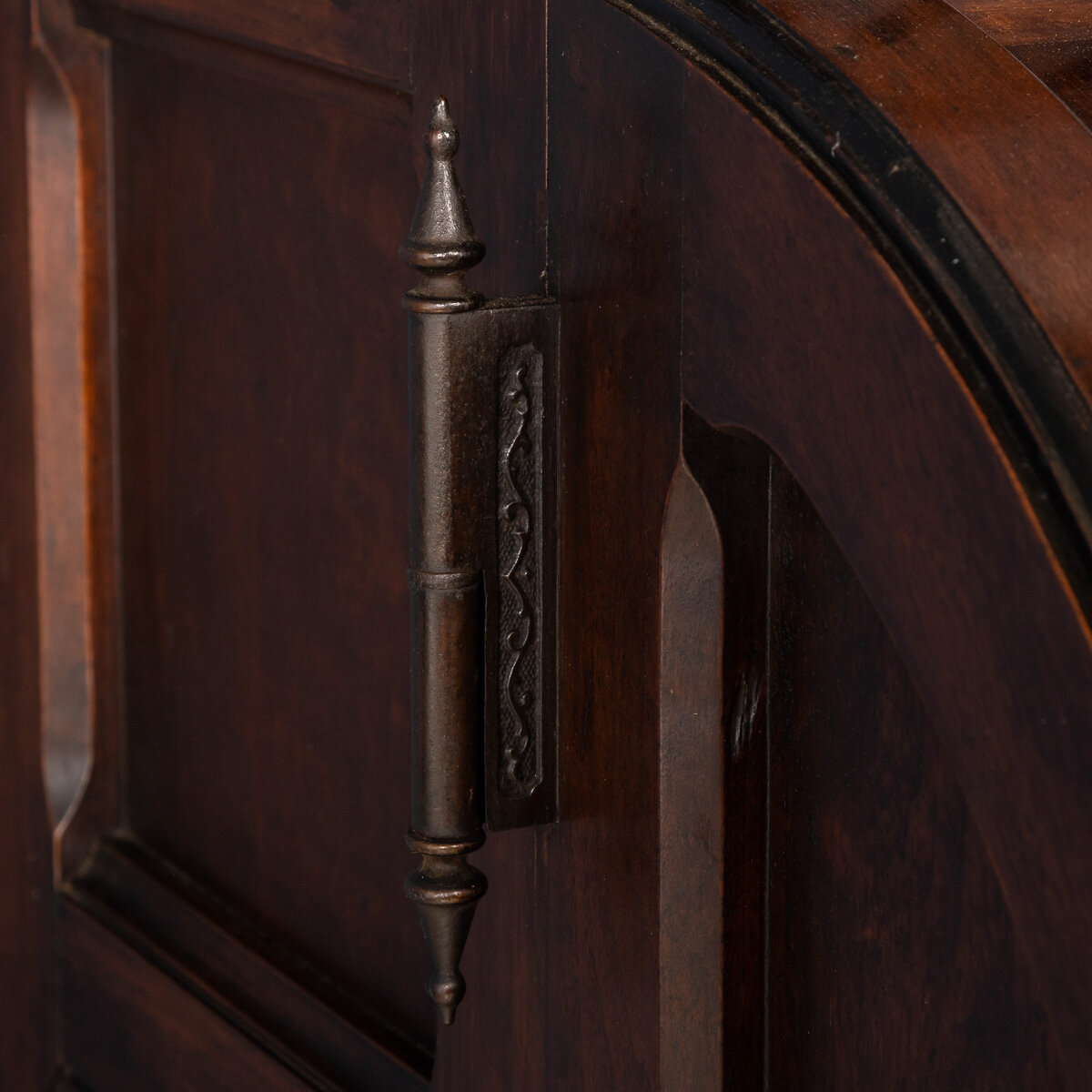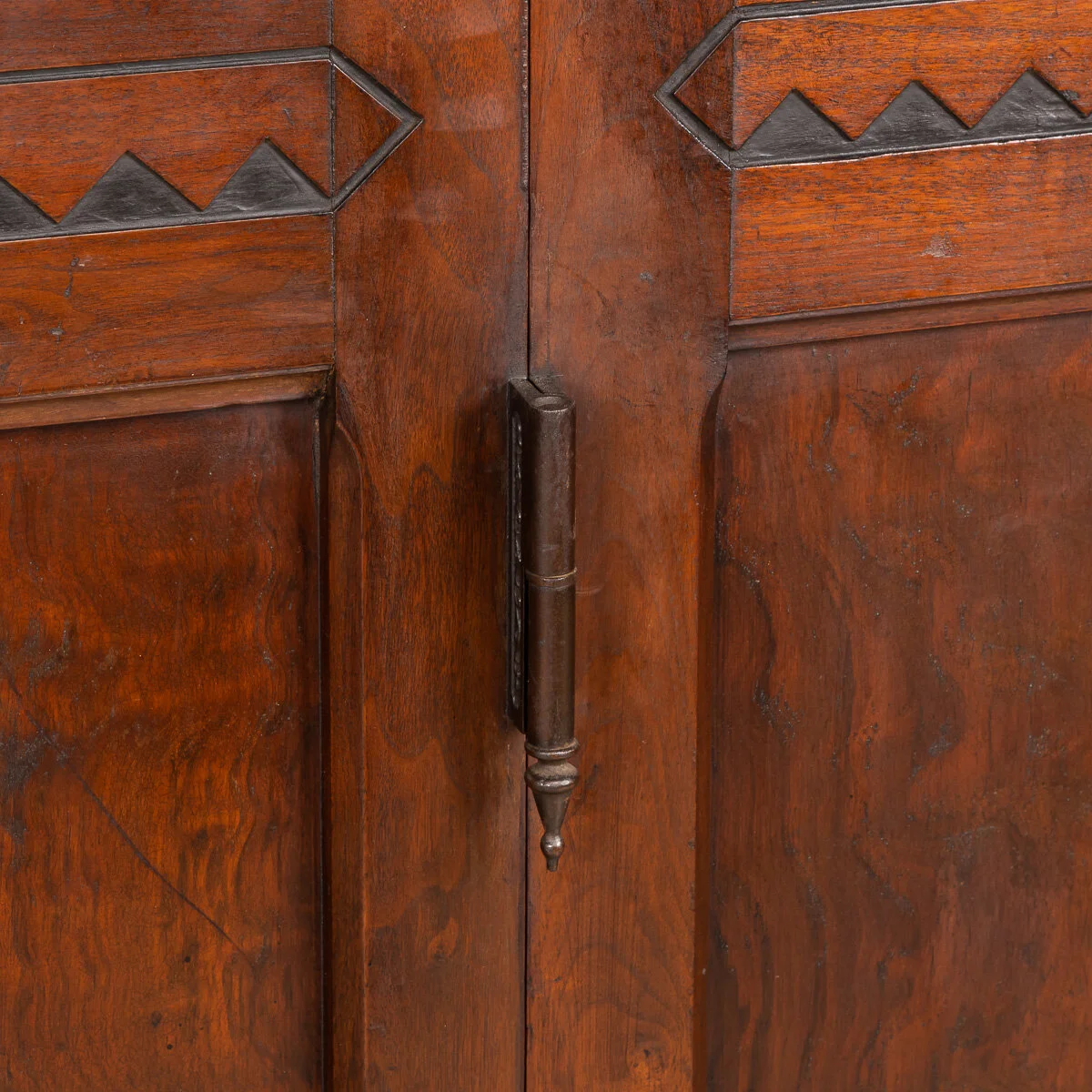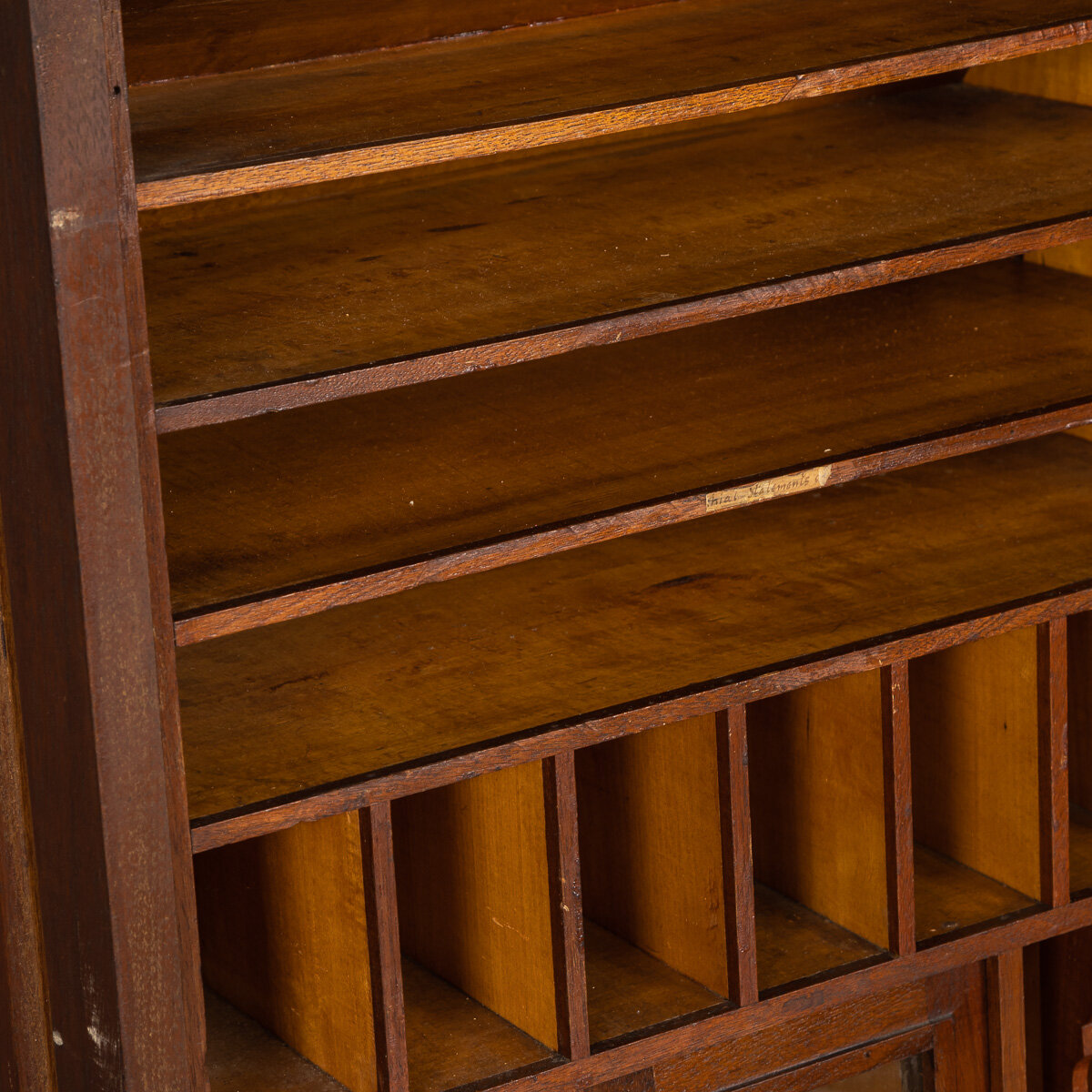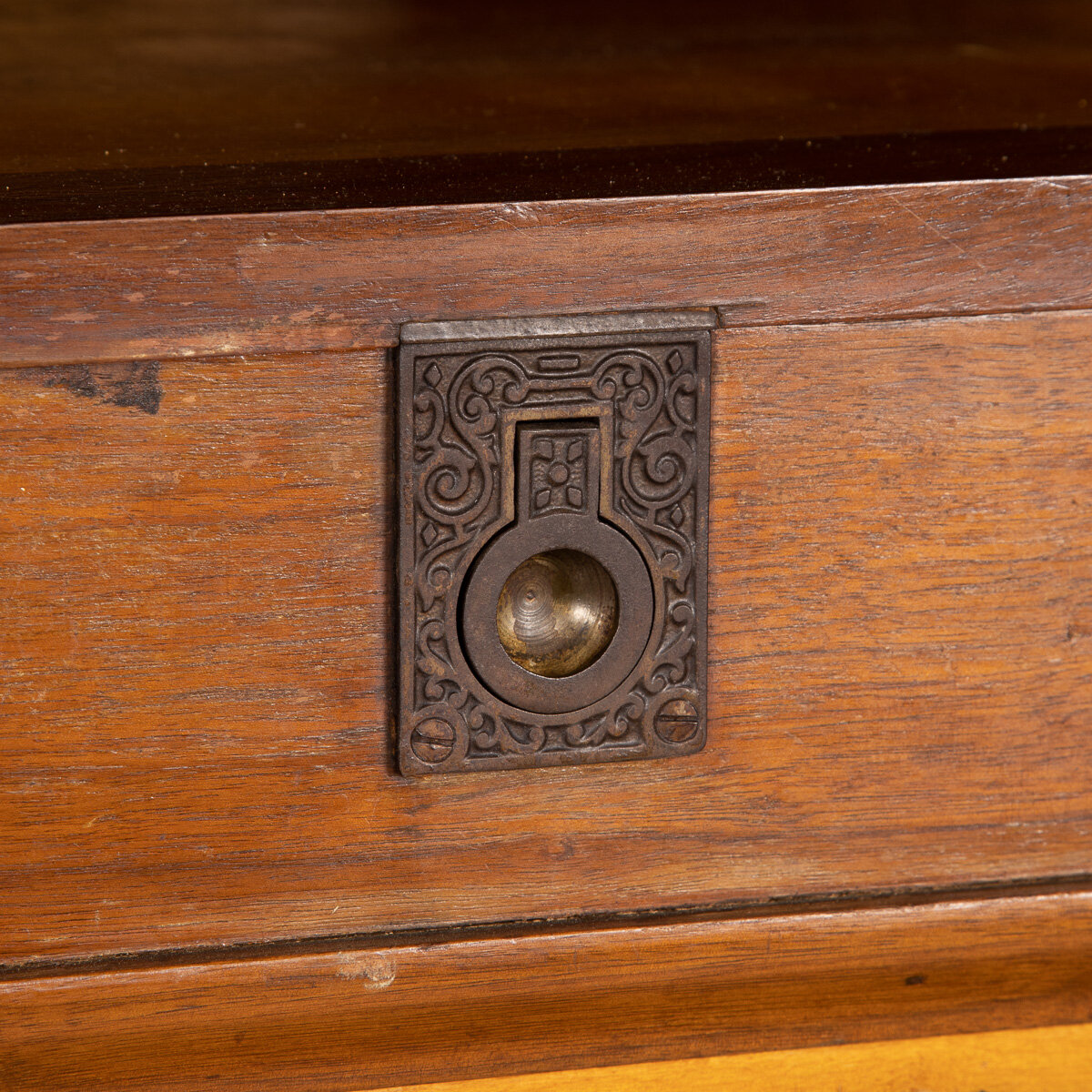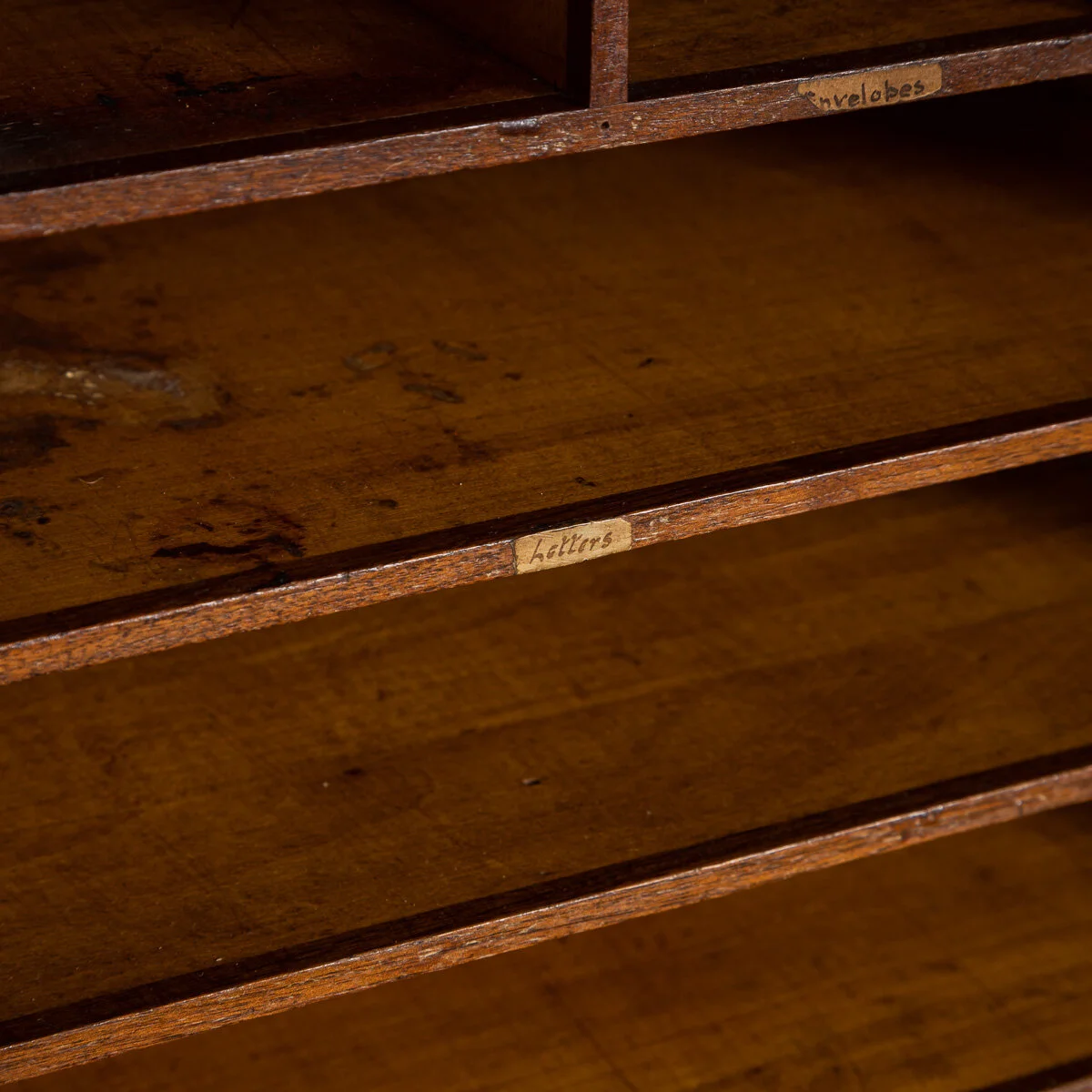A DROP-DOWN DESK MADE BY WOOTON, USA, CIRCA 1880
On October 6, 1874 the United States Patent Office issued the patent on what was officially called "Wooton's Patent Cabinet Office Secretary." The patent Secretary was shown at the Philadelphia Centennial Fair in 1876, the brainchild of an Indianapolis entrepreneur (who later became a Protestant preacher) called William S Wooton. The Wooton Desk was born. Based upon Renaissance Revival styling, it is massive, elaborate and rectangular rather than flowing piece of furniture. It uses projecting panels, contrasting woods, gilding, incised lines and turned ornaments. The basis of the desk enabled a person using it to reach 110 compartments without moving his chair. The barrels of the desk swing open, the writing shelf folds up, and there is ledger space that can be reached from a seated position.
Reference Number: B6587
On October 6, 1874 the United States Patent Office issued the patent on what was officially called "Wooton's Patent Cabinet Office Secretary." The patent Secretary was shown at the Philadelphia Centennial Fair in 1876, the brainchild of an Indianapolis entrepreneur (who later became a Protestant preacher) called William S Wooton. The Wooton Desk was born. Based upon Renaissance Revival styling, it is massive, elaborate and rectangular rather than flowing piece of furniture. It uses projecting panels, contrasting woods, gilding, incised lines and turned ornaments. The basis of the desk enabled a person using it to reach 110 compartments without moving his chair. The barrels of the desk swing open, the writing shelf folds up, and there is ledger space that can be reached from a seated position.
Reference Number: B6587
On October 6, 1874 the United States Patent Office issued the patent on what was officially called "Wooton's Patent Cabinet Office Secretary." The patent Secretary was shown at the Philadelphia Centennial Fair in 1876, the brainchild of an Indianapolis entrepreneur (who later became a Protestant preacher) called William S Wooton. The Wooton Desk was born. Based upon Renaissance Revival styling, it is massive, elaborate and rectangular rather than flowing piece of furniture. It uses projecting panels, contrasting woods, gilding, incised lines and turned ornaments. The basis of the desk enabled a person using it to reach 110 compartments without moving his chair. The barrels of the desk swing open, the writing shelf folds up, and there is ledger space that can be reached from a seated position.
Reference Number: B6587
DESCRIPTION
On October 6, 1874 the United States Patent Office issued the patent on what was officially called "Wooton's Patent Cabinet Office Secretary." The patent Secretary was shown at the Philadelphia Centennial Fair in 1876, the brainchild of an Indianapolis entrepreneur (who later became a Protestant preacher) called William S Wooton. The Wooton Desk was born. Based upon Renaissance Revival styling, it is massive, elaborate and rectangular rather than flowing piece of furniture. It uses projecting panels, contrasting woods, gilding, incised lines and turned ornaments. The basis of the desk enabled a person using it to reach 110 compartments without moving his chair. The barrels of the desk swing open, the writing shelf folds up, and there is ledger space that can be reached from a seated position.
The desk locks with a single key and on the outside of the left hand door there is a mail slot that can be used for people to leave money or messages when the desk is locked. An Indianapolis entrepreneur (who was later to become a Protestant preacher) called William S. Wooton obtained patents for his design and established a company in 1870 with production continuing until about 1884. The Wooton desk is their better known secretary desk.
The Wooton desk was introduced at the end of the 19th century, at a time when office work was changing in a drastic fashion with an increase in paperwork that led to the introduction of filing cabinets, among other things. The white-collar worker invaded the office in huge numbers. The new reservoir-based fountain pen and the typewriter were used to produce greater quantities of office documents than ever before. In this context desks which required users to fold and title each letter or document and place it in a pigeon hole, or small nook, were simply not efficient. It was faster to place an unfolded piece of paper in a folder and place the folder in a filing cabinet or drawer. So production of the Wooton desks was very short indeed and production ceased in 1884. However it was greatly revered in this short period. In fact, some of Wooton’s most famous customers included Joseph Pulitzer, Jay Gould, and John D. Rockefeller. Although Wooton claimed that they had no time to customise these desks due to the demand, they did still make exceptions for high profile clients like Queen Victoria or Ulysses S. Grant. It is a wonderful experience to sit in front of one of these desks today and time warp to an era when letters and documents were written with a quill, sorted and organised in a desk like this one.
Please note that our interior pieces are located at our Interior Design Showroom in Buckinghamshire, if you wish to see them in real life please contact us to arrange an appointment.
CONDITION
In Good Condition - Main locking mechanism to right hand side door is damaged and not working, finial to one of the hinges is missing (please see images)..
SIZE
Height: 185cm
Width: 110cm
Depth: 75cm















